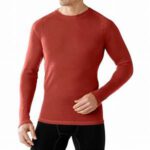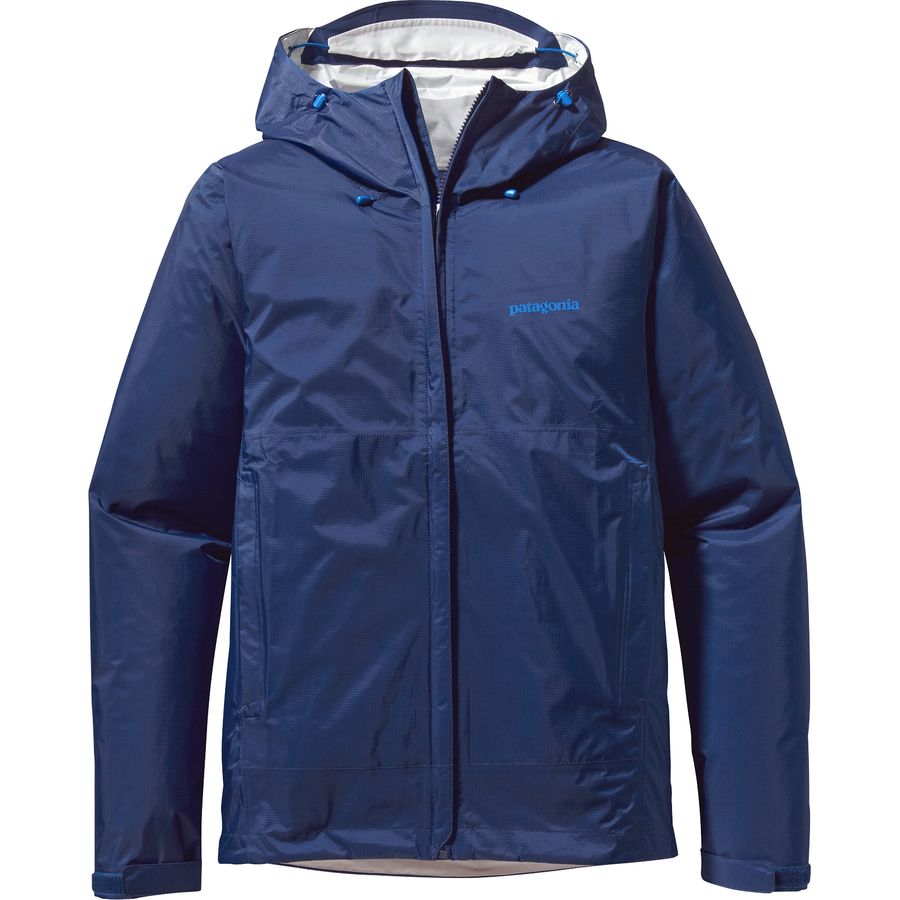
Base layer (top). “For me, it comes down to a choice between Merino wool and Capeline,” says Josh, for your body’s first defense against cold, the thin layer next to your skin. The difference? “In my opinion, Merino wool doesn’t get smelly as fast,” says Josh. Some backpackers, in fact, report going up to a week in the same Merino wool shirt before becoming … aromatic. Capeline, on the other hand, can get smelly with a good sweat. Of course, the goal of a good layering is to keep from sweating in the first place; in cold weather, that sweat will quickly cool your skin if your base layer can’t wick it away fast enough (which is the main mission of the base layer). Capilene’s big plus is that the synthetic fabric is cheaper, up to 30 percent in some cases. Merino wool also tends to be a little softer against your skin. Examples of good base layers in both categories are the Smartwool 250 Merino wool top, the Patagonia Midweight Capilene.
Base layer bottom. “If it’s difficult to commit [your wallet] to both Merino wool tops and bottoms, start with Merino wool bottoms and a Capilene top,” Josh recommends. Even if you don’t actually hike in the bottoms — if you just sleep in them and wear them at base camp — its good to have a Merino wool on the bottom. Meanwhile, experiment with the Capilene on top and see how it works.

Insulating layer Atop your base layer, in colder weather, you’ll likely have a slightly heavier layer that helps create a pocket of air warmed by your body between it and the base layer. Synthetic is preferable, but not as important here. While creating that layer of warm air, the jacket also must be able to breath, and not retain too much warmth. This can be accomplished with high-tech fabric (more expensive) or with a front zipper (full, or quarter pull), or with Josh’s preference: “I like the sweater vest.” He’s not referring to the fashion statement of the 70s, but rather the Patagonia Down Sweater Vest. Filled with 800-fill-power Traceable Down and water repellant, the vest keeps the core warm while letting the arms do their thing and vent heat pent up on the trail.

Outer shell Neither rain nor wind should keep you off the trail, and a good shell should help you live up to that goal. High on Josh’s list: the Arc’teryx Zeta LT Jacket (pictured above), which is light, tight and keeps the water out with Gore-Tex® and Gore-Knit® technology. It’s also got a hood that snugs up around your head, keeping the rain and wind out while not restricting your field of vision. Excellent for layering, but pricey. A less expensive but also good option, Josh says, is the Patagonia Torrentshell Jacket. Keep in mind, that as the temperature rises, the notion of “breathability” is called deeper into question.
Pants. Convertible pants — pants that zip off above the knee — can address a lot of hot/cold issues, especially in the shoulder seasons. Start out at 9 and the temperature’s in the 30s? Keep those legs attached. Come early afternoon and the temperature is pushing 70? Zip ’em off like a Chippendale’s dancer! Few nylon pants will fend off the rain, however; make sure you also pack a pair of rain pants (breathability is less of an issue with pants; thus, you needn’t spend as much money).
Gloves. Gloves are important: you can lose a fair amount of heat out of uncovered hands on a cold day. It’s also easy to overdo it by donning a pair more suitable to an Arctic expedition. For standing around in camp on a cold winter night, sure, you want a well-insulated glove. But for hiking on a day even in the 30s, a thin glove that’s wind and water resistant should do the trick.
Hat. As is the case with your hands, you can lose a lot of heat out the top of your head. A wool cap on a cool day (30s and 40s), something more on the order of a balaclava with neck covering (and optional face covering) when the temps are in the 20s or lower. Yank it off if you start to overheat, throw it back on if you get too cool.
Socks. You can get sad fast on a hike if your feet are cold. And they can get cold fast if you aren’t wearing the right weight sock. For instance, those lightweight hikers that are your best friend on a warm fall day become your arch nemesis in the dead of winter. Move those lightweight hikers to the bottom of your sock drawer and bring those mid-weight and mountaineering socks to the surface. Wool, a wool-synthetic mix, or a synthetic mix — no blister-inducing cotton tube socks, please.
